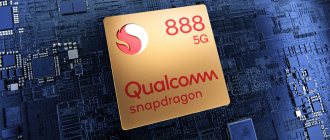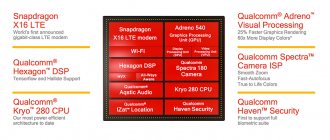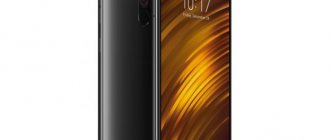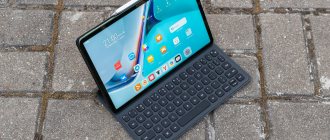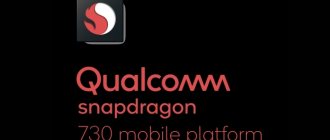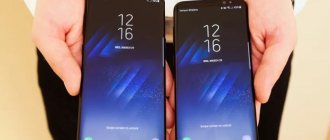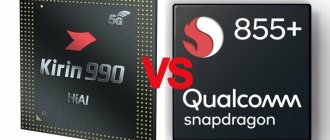Qualcomm is one of the leading creators of SoCs for ultra-mobile devices today, along with Apple and Samsung. Intel and NVIDIA are also developing interesting and noteworthy products in their own way, but, however, both low-watt versions of Atom and the latest versions of NVIDIA Tegra are more suitable for tablet PCs and occupy marginal positions in the smartphone market.
As with other high-performance ASIC categories, mobile SoC development cycles involve mastering increasingly sophisticated photolithography standards. At the current stage, the industry is experiencing a transition from a 20 nm process technology to a 14-16 nm norm with a three-dimensional gate design of transistors (Samsung and TSMC, which are the largest contractors for the production of such chips, use an implementation called FinFET), and Qualcomm from the three mentioned above has jumped into the latter this boat, while Apple and, earlier, Samsung have already mastered advanced technology to produce the SoCs they designed.
The appearance of the Snapdragon 820 for Qualcomm means the restoration of parity with its main rivals, since the chip is produced on the Samsung assembly line with 14 nm FinFET LPP design standards. This is the second generation technical process, providing 10% higher frequencies compared to the 14 mm FinFET LPE on which the Samsung Exynos 7420 is produced. Equally important, in the 820 the company again used its own CPU design. The Snapdragon 800, Qualcomm's flagship chip in the 28 nm era, featured four original Krait cores, but the Snapdragon 810 that replaced it was a combination of standard ARM-licensed Cortex-A57 and A53 cores. Snapdragon 820 received a new CPU with the original Kryo architecture. These measures are necessary to ensure that future smartphones on the updated Qualcomm platform do not repeat the fate of the 2015 generation, which suffered from the relatively low energy efficiency of the 810 model and associated disadvantages: low battery life, excessive heating, etc.
In this review, we will first take a closer look at the characteristics of the system-on-chip itself, and then, before moving on to the benchmark results, we will pay a little attention to the hardware platform that Qualcomm provided for testing.
⇡#Qualcomm Snapdragon 820 architecture
The architecture of the Qualcomm Snapdragon 820 central processor differs significantly from its predecessor, the Snapdragon 810. Both chips regulate the level of power consumption by switching tasks between high-performance and energy-efficient clusters of computing cores. However, if the Snapdragon 810 uses four Cortex-A57 cores and four structurally different Cortex-A53 cores (Big.LITTLE architecture), then the Snapdragon 820 includes only four cores, identical in pipeline structure.
CPU clusters in the Snapdragon 820 differ in frequency settings (up to 1.6 and 2.2 GHz, respectively) and supply voltage. In addition, the high-performance cluster has an expanded L2 cache. Qualcomm does not report specific numbers, but third-party sources indicate 512 KB of L2 cache for the “weak” pair of cores and 1 MB of L2 for the “powerful” pair. L2 is still the highest level of cache memory in the SoC, and there is no third level.
Even though the Snapdragon 820 takes a step back from the 810 in terms of number of processor cores and advances slightly in clock speeds, that doesn't mean performance in common tasks is sacrificed for power savings. On the contrary, Qualcomm reports that architectural changes, coupled with the transition from 20 to 14 nm process technology, have led to a twofold increase in both energy efficiency and CPU speed. The total system power consumption is estimated at 70% of that of the Snapdragon 810. By the way, the Snapdragon 820 features Quick Charge 3.0 technology, which should speed up battery charging by 27% compared to QC 2.0 used in the previous generation SoC.
As a graphics processor, Qualcomm uses its own new generation development - Adreno 530. In addition to improved performance compared to Adreno 430 (by 40%, according to the manufacturer), included in the Snapdragon 810, the new graphics core is compatible with an expanded list of APIs. New support for Vulkan and OpenGL ES 3.1 + Android Expansion Pack. For non-graphics computing, the Snapdragon 820 supports OpenCL 2.0 and the Android-exclusive Renderscript interface. Another feature previously unique to desktop SoCs is virtual memory common to the CPU and GPU. Qualcomm also introduced the Symphony System Manager software component, which manages heterogeneous workloads at the OS kernel level.
Another part of the SoC that is worth highlighting is the Hexagon 680 DSP, designed for various tasks related to image processing: video encoding and decoding, computer vision, augmented reality, etc. The block operates with an exclusive set of HVX (Hexagon Vector Extensions) instructions.
The Snapdragon 820 received a new integrated QS X12 modem with support for LTE category 12 for the incoming signal and 13 for the outgoing signal (peak speeds are 600 and 150 Mbit/s, respectively). Wi-Fi is supported at the IEEE 802.11ac (MIMO 2×2 with throughput up to 600 Mbps) and IEEE 802.11ad standards. It is possible to switch traffic (including calls) on the fly between Wi-Fi and LTE networks. However, the Wi-Fi module, apparently, is not part of the SoC itself and is made in the form of a separate QCA6174A chip, which end manufacturers can replace with something else.
Tests
To verify the superiority of one of the processors, you can look at the test results on benchmarks - performance assessments of smartphones, computers, tablets, etc. The devices are compared with each other, then a rating is compiled.
The Xiaomi Mi 8 SE smartphone was chosen as a representative of the Snapdragon 710 processor, currently the only one with such a processor, the Snapdragon 820 was represented by the MDP/S 820.
| Benchmark | Xiaomi Mi 8SE (S710) | MDP/S 820 |
| Geekbench 4.1 | 5908 | 5916 |
| Geekbench 4.3 | 4353 | 4496 |
| Mozilla Kraken 1.1 | 3090 | 13191 |
| Octane V2 | 9798 | 4705 |
| AnTuTu v6 | 150074 | 136383 |
| PCMark for Android | 6461 | 6083 |
If the first chipset is the leader in terms of performance, the second has a big lead. But still, the newer processor has more votes.
⇡#Development platform based on Snapdragon 820
To conduct benchmarks, we were offered an MDP (Mobile Development Platform) with a Snapdragon 820 chip on board. The device is a “shade” with a 6.2-inch screen (resolution 2560 × 1600). The 3 GB LPDDR 4 RAM operates at a frequency of 1804 MHz, as opposed to 1555 MHz typical for devices based on the Snapdragon 810 and Samsung Exynos 7420. The sample supports only Wi-Fi for wireless communications.
Commercial devices based on the Snapdragon 820 will naturally differ from the MDP in appearance, but in terms of basic specifications, the sample is quite representative and, most importantly, allows you to evaluate the performance of the new SoC in the target smartphone form factor. At least during the test session, the device’s body was never noticeably hot to the touch, and this is already a good sign.
Autonomy
In this case, the lower the technical process indicators, the better. This provides certain advantages in terms of the battery life of smartphones. The 710 Dragon was introduced by the Lenovo Z5 smartphone, and the Snapdragon 820 was introduced by the Galaxy S7 Edge.
| Index | Lenovo Z5 | Galaxy S7 Edge |
| Battery capacity | 3180 mAh | 3600 mAh |
| Working hours | Up to 4.5 hours | Up to 24 hours 30 minutes |
| Charging time | From 0 to 50% in 15 minutes | From 0 to 50% in 15 minutes |
The battery life on a 100% battery charge when discharging to 0% was tested using tasks of different power levels.
Tests have shown that a smartphone with the 820 Dragon is prone to overheating, while a smartphone with the first processor is not.
⇡#Testing: performance
Test participants
- Apple iPhone 6s;
- Google Nexus 6P;
- Qualcomm Snapdragon 820 MDP;
- Samsung Galaxy Note 5.
| Apple iPhone 6s | Google Nexus 6P | Qualcomm Snapdragon 820 MDP | Samsung Galaxy Note 5 | |
| CPU | Apple A9: two Apple Twister cores (ARMv8, 64 bit), 1.85 GHz; integrated Apple M9 coprocessor; FinFET 14/16 nm process technology | Qualcomm Snapdragon 810 v2.1 MSM8994: quad core ARM Cortex-A53, 1.55 GHz (ARM v8, 64 bit); four ARM Cortex-A57 cores, 2 GHz (ARM v8, 64 bit); process technology 20 nm HPm | Qualcomm Snapdragon 820: dual Qualcomm Kryo cores (ARMv8, 64 bit), 1.6 GHz; two Qualcomm Kryo cores (ARMv8, 64 bit), frequency 2.2 GHz; FinFET 14 nm process technology | Samsung Exynos 7420: four cores ARM Cortex A53 (ARMv8, 64 bit), frequency 1.5 GHz; four cores ARM Cortex-A57 (ARMv8, 64 bit), frequency 2.1 GHz; FinFET 14 nm process technology |
| GPU | Imagination PowerVR GT7600 | Qualcomm Adreno 430, 630 MHz | Qualcomm Adreno 530, 624 MHz | ARM Mali-T760 MP8, 772 MHz |
| RAM | 2 GB LPDDR4 | 3 GB LPDDR4 | 3 GB LPDDR4 | 4 GB LPDDR4 |
| Operating system (at the time of testing) | Apple iOS 9.1 | Google Android 6.0 Marshmallow | Google Android 6.0 Marshmallow | Google Android 6.0 Marshmallow |
Notes on test software
The MDP ran Android 6.0, although the software for the Snapdragon 820 still needs some serious work. In particular, in our hands the sample often “glitched”, but for MDP this is forgivable. More important to note is that key components of Android, especially the Chrome browser, are not yet fully optimized for the Snapdragon 820 architecture. Google will reportedly incorporate Qualcomm's proposed changes in future versions, so MDP results in browser tests should be assessed with caution for now. Fortunately, along with Chrome, the device came with an optimized version of the stock Android browser, showing the Snapdragon 820 in a more favorable light.
AnTuTu Benchmark v6.0
We used the recently released sixth version of AnTuTu as a comprehensive benchmark. Here we see that the Snapdragon 820 simply destroyed the Samsung Exynos 7420 and its predecessor Snapdragon 810, competing almost equally with the Apple A9.
Geekbench 3 64-bit
Remarkable results for Qualcomm are shown in the single-threaded Geekbench test, where the Snapdragon 820 is not much inferior to the Apple A9, a system famous for its performance in single-threaded workloads.
In the multi-threaded version of the test, the Snapdragon 820 left behind both its eight-core rivals - the Snapdragon 810 and Samsung Exynos 7420, and the Apple A9, which is not held back so much by the lack of cores.
Google Octane 2.0
The Apple A9 + Safari combination remains the undisputed leader in JavaScript performance tests, but in the group of Android devices, the Snapdragon 820 device showed the best performance even in Chrome, and the optimized browser gives Qualcomm an additional advantage.
WebXPRT 2015
This test is quite long, so during the limited time of the test session we only managed to run WebXPRT in an optimized browser. Here, the gap between the Apple A9 and its pursuers is not so great, and the Snapdragon 820 is even closer to the leader than the next in rank, the Exynos 7420.
GFX Bench 3.1 (T-Rex HD)
In terms of “pure” GPU performance (Offscreen test, resolution 1920 × 1080), the test sample on the Snapdragon 820 showed an impressive result compared to other representatives of the Android team and is ahead of even the Apple smartphone, which is traditionally strong in terms of graphics. However, when rendering to the screen, the iPhone 6s is in the lead due to its lower resolution (1334 × 750) compared to that of the MDP Snapdragon 820 (2560 × 1600).
3DMark Ice Storm Unlimited
The overall 3DMark score is strongly influenced by CPU performance, so here the Snapdragon 820 does not look as advantageous as in purely graphics tests, and is inferior not only to the Apple A9, but also to the Exynos 7420.
Functions
1.Has built-in LTE
Qualcomm Snapdragon 820 MSM8996
The system on a chip (SoC) has an integrated LTE cellular chip. LTE can download at faster speeds than older 3G technologies.
2.download speed
600MBits/s
Download speed is a measurement of Internet connection bandwidth, representing the maximum data transfer speed at which a device can access online content.
3.Has dynamic frequency scaling
Qualcomm Snapdragon 820 MSM8996 (Qualcomm Kryo)
Dynamic frequency scaling is a technology that allows the processor to save power and reduce noise when it is under light load.
4.Has NX bit
Qualcomm Snapdragon 820 MSM8996 (Qualcomm Kryo)
NX bit helps protect your computer from virus attacks.
5.bits transmitted in the same time
128(Qualcomm Kryo)
NEON provides faster processing of multimedia data, such as MP3 listening.
6.Has AES
Qualcomm Snapdragon 820 MSM8996 (Qualcomm Kryo)
AES is used to speed up encryption and decryption.
⇡#Conclusions
In general, the Snapdragon 820 tests look very optimistic for Qualcomm. As for CPU performance, it is not yet clear which factor had a greater impact - the change in process technology from 20 to 14 nm or the new architecture, but in the end the Snapdragon 820 made a big leap in single-threaded workloads compared to the Snapdragon 810 and even advanced in multi-threaded workloads. despite the reduction in the number of cores from eight to four. Apple is still outclassed in any task that can't fully load architectures with more than two cores, but compared to existing competitors for the Android platform, the Snapdragon 820 system achieves serious results. In graphics tasks, this platform has become the fastest SoC for smartphones today, leaving behind even the Apple A9, which until now held the undisputed leadership in this area.
However, at a time when commercial products based on the Snapdragon 820 will already be widely available, competition will not be so easy. They will have to compete with Samsung's flagship(s) based on the upcoming Exynos 8890 SoC, which, according to some sources, has already entered production.
Peripheral controllers
In addition to the Kryo-based processor, the Snapdragon 820 includes a Hexagon 620 DSP (digital signal processor) operating at frequencies up to 1 GHz. It takes the load off the main CPU cores for low-level tasks.
The 14-bit camera controller in Snapdragon is capable of processing up to 1.5 gigapixels per second. The chip is capable of providing parallel operation of a pair of matrices with resolutions of up to 25 MP, or one with 28 MP. Also among its capabilities is support for recording video in 4K at up to 60 FPS.
Work 2.0 benchmark
Work 2.0 Performance will help test how the device copes with processing routine everyday activities, such as browsing the web, editing videos and photos, working with documents and data. Based on real-world applications, the test measures performance and battery life, and allows you to compare devices.
Video
Result
Points: 5431 / 5501 (821) VS 5339 (820) - difference of 92 - 162 points
The results of this test vary depending on the condition of the smartphone. We decided to pay more attention to the Snapdragon 821 and captured its lower threshold results in screenshots.
AnTuTu
AnTuTu Benchmark
One of the most popular applications for testing hardware capabilities is AnTuTu Benchmark - a comparative test of smartphones and tablets, which is used by more than one hundred million people! It analyzes and compares parameters such as processor and graphics chip power (2D and 3D graphics playback speed), RAM performance and external memory speed.
Result
– 3D Marooned: 27.55 FPS (821) VS 19.40 FPS (820)
– 3D Garden: 34.20 FPS (821) VS 27.11 FPS (820)
AnTuTu 3DBench
A more advanced and complex version of this application is AnTuTu 3DBench , which allows you to test performance when running “heavy” games: the program runs 2 different scenarios, both of which are made on the Unity3D 5.0 engine. It was this, as it was more spectacular and detailed, that we used to create the video.
Video
Result
Score: 158,004 (821) VS 128,475 (820) - difference of 29,529 points
3DMark (Sling Shot Extreme)
3DMark is a popular cross-platform performance test developed by Futuremark specifically for gamers. It is widely regarded as the "industry standard for gaming performance measurement and professional-grade testing tool." Includes several tests, of which we chose the most difficult - Sling Shot Extreme .
Video
Result
Points: 2164 (821) VS 2086 (820) - difference of 78 points


